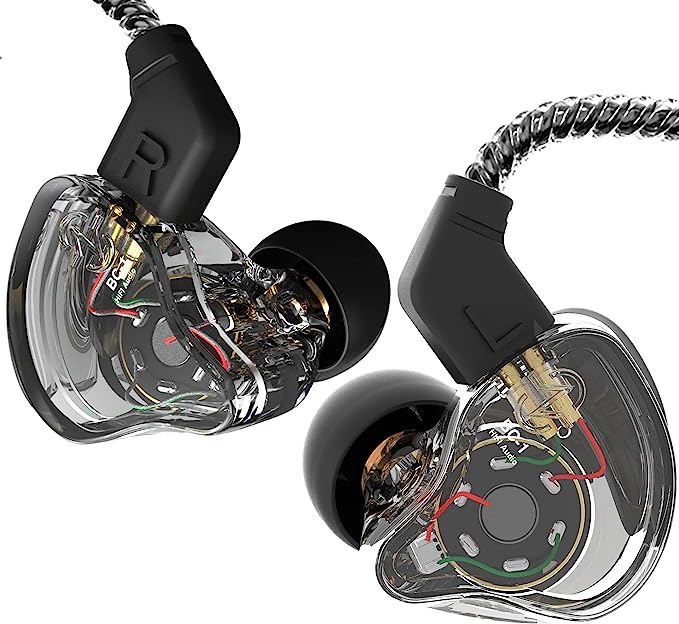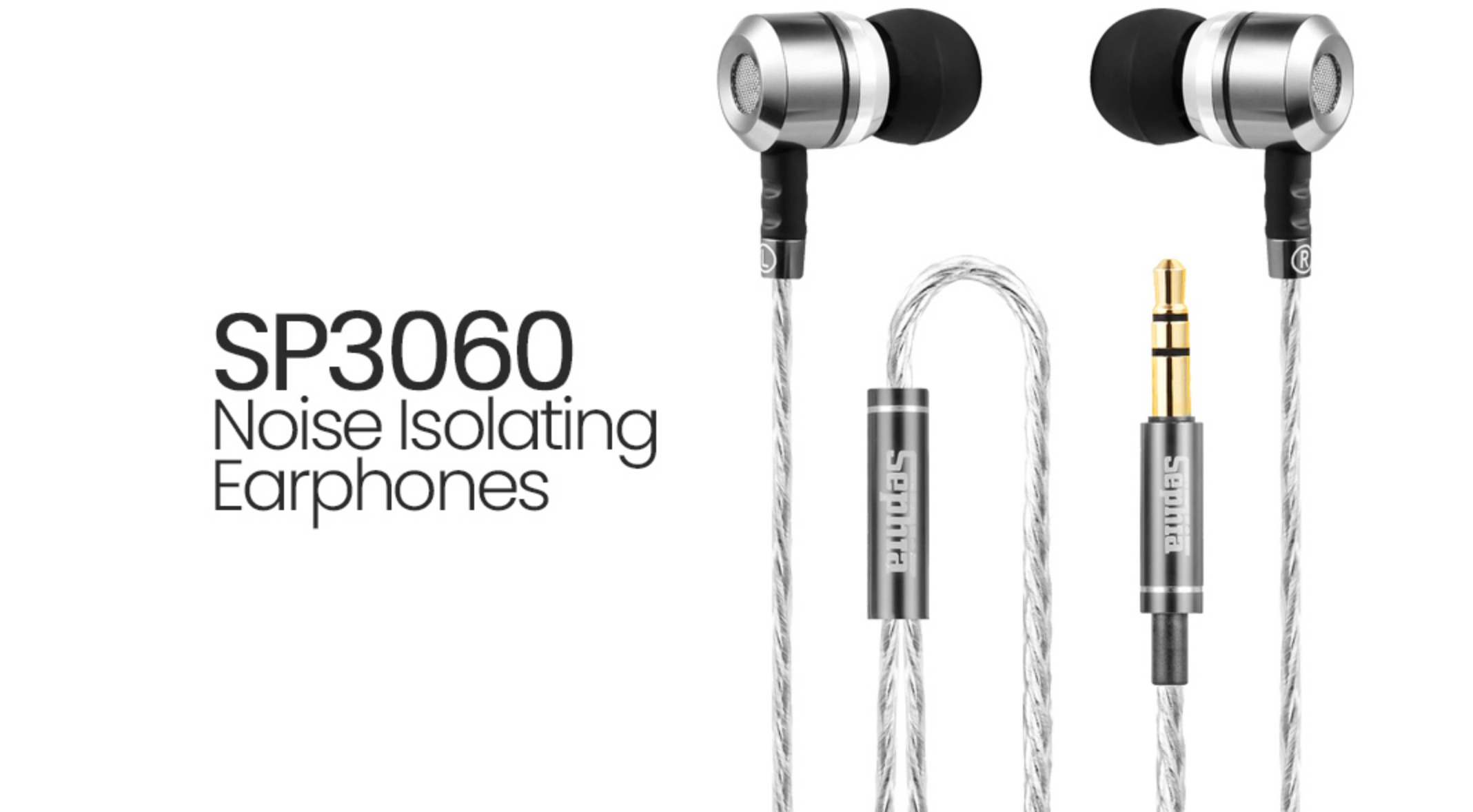There’s a certain magic in truly hearing music as it was intended—the subtle breath of a vocalist, the precise decay of a cymbal, the resonant warmth of a bass guitar. For years, achieving this kind of high-fidelity (HiFi) audio experience often meant a significant investment. But what if the gateway to a richer soundscape was more accessible than we thought? Today, we’re going “under the hood” of an intriguing contender in the world of affordable In-Ear Monitors (IEMs): the YINYOO CCZ Melody. These aren’t just ordinary earbuds; they represent a fascinating intersection of acoustic engineering, material science, and ergonomic design, all aimed at delivering a compelling listening experience without emptying your wallet. As an audio technologist, I find that the most exciting innovations often lie in making sophisticated technology available to a wider audience, and the CCZ Melody, with its 1DD 1BA hybrid driver system and thoughtful construction, offers a perfect case study.

The Dual-Engine Heart: Understanding the Hybrid 1DD + 1BA System
The soul of any listening device lies in its drivers—the miniature engines that transform electrical signals into the sound waves that grace our ears. The YINYOO CCZ Melody employs what’s known in the audio world as a hybrid driver configuration, specifically a pairing of one Dynamic Driver (DD) and one Balanced Armature (BA) driver within each earpiece. This isn’t just a numbers game; it’s a strategic alliance designed to let each type of driver shine in its area of expertise.
Think of a Dynamic Driver as the robust workhorse of the audio world, akin to a cello or a woofer in a larger speaker system. It typically features a cone-like diaphragm attached to a voice coil that moves within a magnetic field. This design is particularly adept at moving larger volumes of air, making it excellent for reproducing those deep, resonant bass frequencies and full-bodied, natural-sounding midrange tones. When YINYOO highlights “HiFi Bass” for the CCZ Melody, the DD is the primary architect of that experience. User Steven Lawrence, in a verified purchase review from the provided product information, captured this when he mentioned the “bass was punchy.”
Complementing the DD is the Balanced Armature (BA) Driver. BAs are marvels of miniaturization, operating on a different principle where an electrical signal vibrates a tiny reed (the armature) balanced between magnets, and these vibrations are transferred to a very small, stiff diaphragm. Imagine the precision and delicacy of a violin or a tweeter in a high-end audio setup. BAs excel at rendering higher frequencies with remarkable clarity and speed, unveiling the subtle nuances and details in music—the “crystal clear treble” that the CCZ Melody product description speaks of. As the manufacturer puts it, this combination is designed to “give more details of music show.” User RB4005, a performing bassist, noted this capability, stating, “I’m hearing detail in cymbals and effects.”
So, why combine them? This is where the “hybrid harmony” comes into play. It’s like assembling a small orchestra where each instrument plays the part it’s best suited for. The DD lays down a solid, warm foundation, while the BA weaves in the intricate high-frequency details and sparkle. This synergy aims to create a more complete and balanced sound profile across the entire audible spectrum than either driver type might achieve alone, leading to the “bright and clear, the whole is transparent” sound signature described for the YINYOO CCZ Melody. This is achieved, in principle, by each driver handling the range of frequencies where it is most efficient and accurate, often guided by a conceptual crossover network that directs the appropriate frequencies to each driver. Steven Lawrence’s enthusiastic comment, “The dual driver really does make a difference,” points directly to the perceived success of this collaborative approach. Such In-Ear Monitor technology aims to minimize distortion by not forcing a single driver to reproduce frequencies outside its comfort zone.
Crafted for Comfort & Sound: The Ergonomic & Acoustic Design
Beyond the drivers, the physical form and materials of an IEM are critical, influencing not only how it sounds but also how it feels in your ears over extended periods. After all, what good is brilliant sound if the device is uncomfortable to wear?
The shells, or “cavities,” of the CCZ Melody are constructed from Polycarbonate (PC), a thermoplastic known for its impressive combination of lightness and rigidity. From an acoustic standpoint, a rigid enclosure is desirable as it helps to minimize unwanted resonances or vibrations that could color the sound. Polycarbonate is also easily molded, allowing for complex ergonomic shapes. The product description highlights that a “single headset weighs only 2.3g,” contributing to what YINYOO calls “Wearing without Pressure, Releasing the Burden of Ears.” The UV varnish finish adds an “elegant” touch and likely a degree of surface protection.
Integral to both comfort and sound quality are the ear tips. The CCZ Melody comes with three sizes of ear tips made from Thermoplastic Elastomer (TPE), a material prized for its soft, flexible, and often hypoallergenic qualities. A proper seal between the ear tip and the ear canal is paramount – it’s the gatekeeper to impactful bass response and effective passive noise isolation, helping to block out external sounds so you can focus on the music. YINYOO states that the “ear tips adopt TPE material, which is comfortable and smooth to wear,” and mentions a “Groove design at ear cap brings more stereo sound, enhancing details and sound stage.” While the exact mechanism of the groove design isn’t detailed in the provided information, it suggests an intentional shaping to influence sound delivery. Furthermore, “Short sound guide tubes reducing sound loss” implies an acoustic design choice to ensure the sound generated by the drivers reaches the eardrum with minimal degradation. The importance of good ergonomics is echoed by user Robinson, who found the “comfort level of these earphones is wonderful. I can spend 5 hours with them on no discomfort.”
For a secure fit, especially crucial for musicians on stage or anyone on the move, the CCZ Melody incorporates TPE ear fins and an over-ear cable design with memory ear hooks. The “TPE soft and environment-friendly fin is added to the rear of the cavity, providing a more comfortable, stable, lighter experience.” This fin nestles in the concha of the ear, offering an additional anchor point. The “wrap-around ear design keeps earbuds from slipping out while working out,” and the memory wire section of the cable can be shaped to “hold its shape around the ear,” further securing the IEMs and helping to reduce cable noise (microphonics).
The Unseen Highway: The 4N OFC Cable
Often overlooked, the cable connecting your audio source to your IEMs is the critical highway for the audio signal. The CCZ Melody features a “Professional 4 core 4N OFC wire.” Let’s break that down. “OFC” stands for Oxygen-Free Copper. Copper is an excellent conductor of electricity, but the presence of oxygen and other impurities can create tiny barriers that impede the smooth flow of the electrical signal, potentially leading to signal loss or distortion, especially over the cable’s length. OFC is refined to reduce the oxygen content to very low levels—”4N” signifies 99.99% purity. The idea is that higher purity copper offers a cleaner, less obstructed path for the audio signal, aiming for a more faithful transmission from your device to the drivers. Think of it as the difference between a clear, multi-lane expressway versus a bumpy, single-lane country road for your music signal.
The cable is also described as “soft and durable” and terminates in a standard 3.5mm plug, ensuring compatibility with a wide array of devices from smartphones to dedicated music players. A particularly user-friendly feature is the detachable 2-pins Connector. This is a significant advantage at this price point. It means that if the cable—often the most vulnerable part of any wired earphone—suffers wear and tear, you can simply replace it without having to discard the entire IEM. It also opens the door for users who might want to experiment with different aftermarket cables, as YINYOO suggests: “Search yinyoo cable, find what you want.” While user Robinson found the cable “on the shorter side” for their specific setup, this detachable nature offers flexibility. This practical inclusion of a detachable 2pins Connector is a nod towards longevity and user customization often found in more premium budget audiophile IEMs.
The Holistic Experience: When Engineering Sings
Ultimately, these individual technological and design elements—the hybrid 1DD 1BA earphones system, the carefully chosen materials for the PC cavity and TPE tips, the ergonomic considerations of ear fins and hooks, and the quality of the 4N OFC cable—must all work in concert. The goal is to translate electrical signals into an auditory experience that is engaging, detailed, and comfortable.
Based on the descriptions and user feedback from the provided information, the YINYOO CCZ Melody aims for a sound that is “relatively bright and clear, the whole is transparent,” with “deep bass and crystal clear treble.” This suggests a V-shaped or U-shaped sound signature, common in many consumer audio products, which emphasizes the lows and highs for an exciting listen. Feedback like “good separation between instruments and vocals” (from Amazon reviews #1) and “Stereo imaging is pretty good” (RB4005) indicates that the hybrid system and overall acoustic design are contributing to a well-defined soundstage where different elements of the music can be distinctly perceived. These characteristics make such IEMs suitable for a variety of listeners and applications, from musicians needing clear monitoring for vocals or instruments like drums, to gamers seeking immersive audio cues, or simply for everyday music enjoyment across diverse genres.
Sound Science, Accessible Artistry
The YINYOO CCZ Melody stands as a compelling example of how sophisticated audio principles can be thoughtfully applied to create an accessible product. It’s a reminder that the pursuit of great sound isn’t solely the domain of ultra-expensive gear. By understanding the science behind the hybrid drivers, the importance of material choices in acoustic design, and the subtleties of signal transmission, we can better appreciate the engineering craft that goes into even a modestly priced pair of In-Ear Monitors. The journey into HiFi audio is one of discovery, and devices like the CCZ Melody invite more people to begin that journey, to perhaps, like Steven Lawrence, have their music “come alive” and hear things they never did before. It’s a testament to the democratization of quality audio, where thoughtful engineering makes the art of sound more vibrant and available to all.



